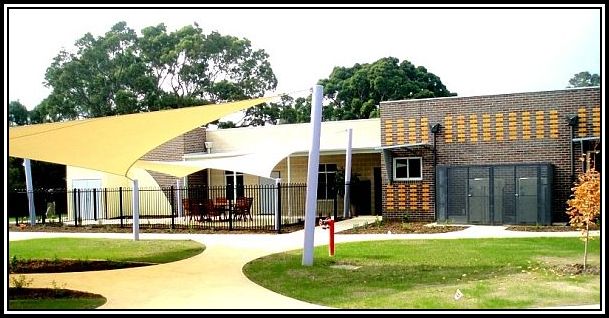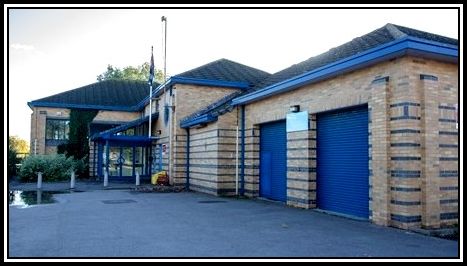THE SETTLEMENT HOUSES
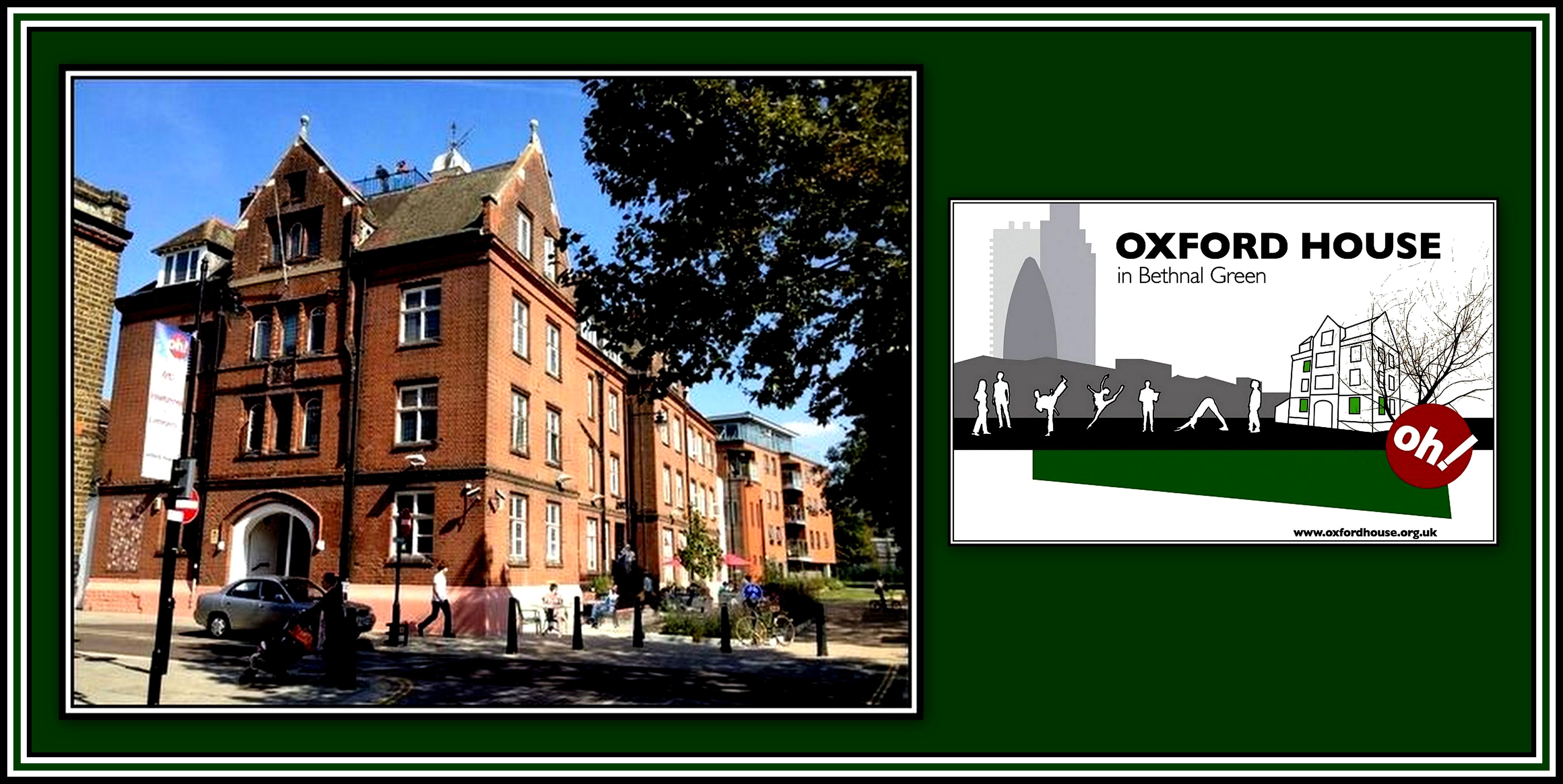 Oxford House on Derbyshire Street in Bethnal Green
Oxford House on Derbyshire Street in Bethnal Green
-oOo-
Women’s Suffrage became a national movement in 1867 with the formation of the National Society for Women’s Suffrage and National Union of Women’s Suffrage Societies (NUWSS) formed in 1897. During this time, Women’s Suffrage Movements were being formed and gaining traction throughout the U.K.
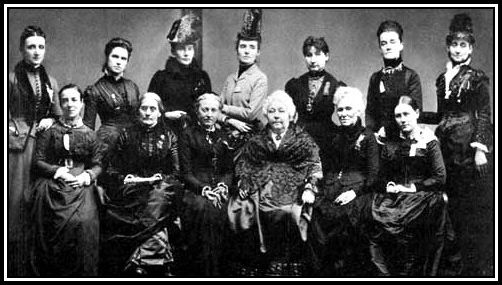 Executive Committee of the National Society for Women’s Suffrage (1872)
Executive Committee of the National Society for Women’s Suffrage (1872)
In 1906, Women’s Suffrage took on a more militant look with the formation of the Women’s Social and Political Union (WSPU), founded by six women including Emmeline Pankhurst (1858-1928) and her daughters, Christabel and Sylvia. Members of this Union were commonly known as Suffragettes.
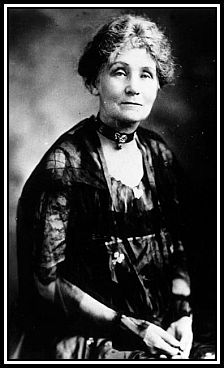 Emmeline Pankhurst
Emmeline Pankhurst
The outbreak of the First World War led to a suspension of the militant campaigns of the Union together with the decision to support the British Government and the country’s war efforts. Women of all classes entering many areas of employment and worked hard to support the military forces and also the population at home.
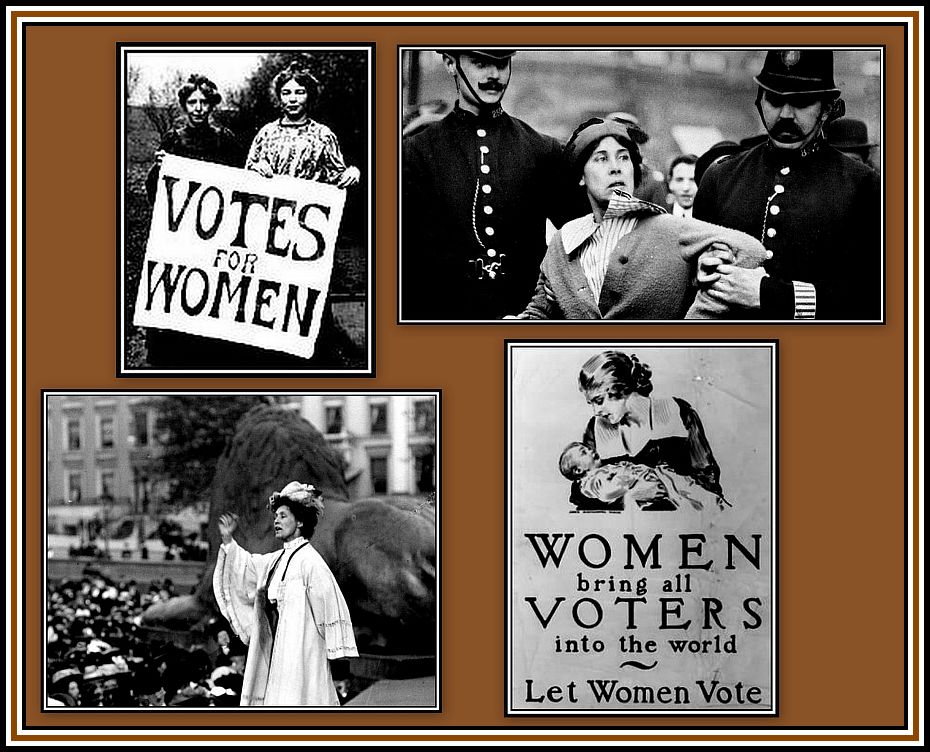 Votes for Women
Votes for Women
In 1918, a Coalition Government passed the Representation of the People Act 1918. The Act gave women who were over the age of 30 and who also met minimum property qualifications the right to vote. In 1928, the Government passed the Representation of the People (Equal Franchise) Act, which extended the right to vote to all women over the age of 21.
-oOo-
At this time, the residents of Oxford House were all male.
-oOo-
OXFORD HOUSE TODAY
-oOo-
BREAKING THE GLASS CEILING
The Two World Wars and the period between them ushered in a wave of change throughout society and brought about a pronounced change in the running of Oxford House. Although The Council, which was in charge of the affairs of The House, continued to maintain the overall Mission and Vision of the founders, the times brought changes to how these were maintained.
At its founding, and for a number of years after, The House was run by Oxford Graduates who were mostly clerics. With the advent of the First World War and the years that followed, it became increasingly more difficult to attract the necessary number of graduates to The House and give up their time and undertake volunteer work. As a result, non-clerics came to The House and took on the duties of running the various Clubs and services offered.
Until the time between the wars, Oxford House had been seen by many as a Batchelor’s Retreat. The year of 1937 was a watershed year for The House, as it heralded the time when women were to enter The House and live there. The now-Head of The Council was the first person in this position to be married and part of the third floor of Oxford House was given over for their accommodation. As revolutionary as this may have appeared at the time, it needs to be remembered that a Matron and a Cook, both women, were already working and living at The House.
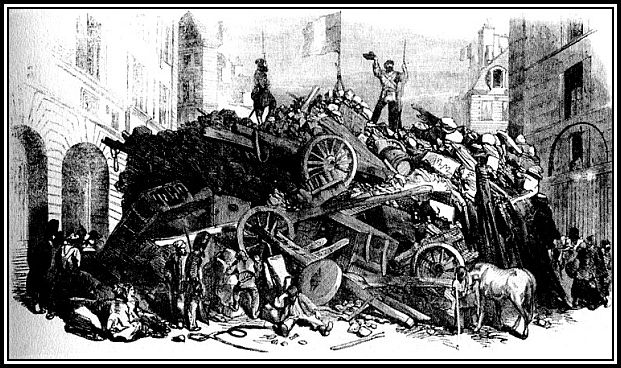 A Barricade in Rue St. Martin in Paris during the February Days of 1848
A Barricade in Rue St. Martin in Paris during the February Days of 1848
Perhaps access to Oxford House was not quite as difficult as this!
The Excelsior Magazine, a publication sanctioned by Oxford House, noted in an article of the time that mixed activities in Clubs had already occurred and that dances had been held at The House. It also needs to be remembered that The Musical and Drama Association of Oxford House had presented mixed-dramatic and choral presentations to the public at Excelsior Hall and elsewhere.
The Excelsior Magazine article continued to say that Oxford House had gone a certain way with the mixed activities, which seemed to be in tune with present-day social custom. The article also noted a comment from The Council, which stated that The Council did not contemplate leaping from that to mixed clubs, so let no one take alarm.
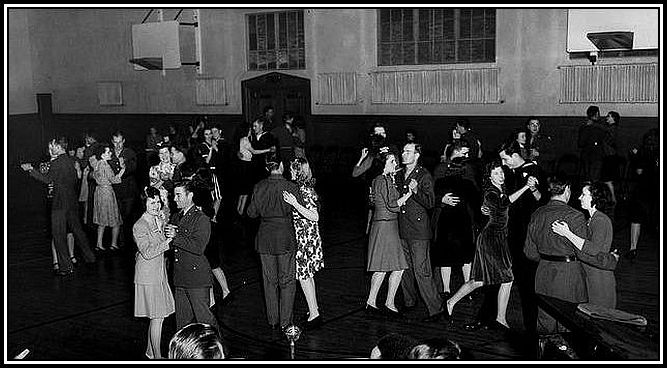 Not-Yet-Ready for Couples Dancing Together
Not-Yet-Ready for Couples Dancing Together
-oOo-
In 1938, The Council discussed whether to invite women to be residents at The Oxford House Settlement and also to allow mixed activities into The Clubs. However, there was a difference of opinion amongst members on these subjects. However, these subjects were soon to take a backseat to other pressing activities, as the Second World War was about the be declared.
-oOo-
During the Second World War, the doors of Oxford House were opened to the public in general and The House became used for a variety of purposes including a shelter (both in The First and Second World Wars), a feeding centre, an employment office and a day nursery, as well as offering a multitude of other services to the population of Bethnal Green.
-oOo-

By 1946, women were able to play a full and active role in the life of Oxford House, both as student residents and members of the local community. The Second World War had brought down many barriers that separated the residents of The House from the community of Bethnal Green, including those that had kept women out.
-oOo-
MOVING TOWARDS A COMMUNITY CENTRE
In 1945, together with four other Settlements in Bethnal Green, Oxford House took part in the running of two short training courses. Under the title, Discover you Neighbour, the courses, lasting up to three weeks and were arranged so as to show clearly to young Ordinands and other professionals, the importance of the human and social factors in the successful practice of any profession.
-oOo-
Also in 1945, since Oxford House was now housing a number of different organisations, it was decided to form an Advisory Committee made up from representatives from each of these organisations. The aim of the Advisory Committee was to discuss how best to use the available space of Oxford House and ways to make improvements. The Advisory Committee also went on to plan joint activities and produced a Bulletin where the organisations were notified of events of general interest. Oxford House was represented on the Advisory Committee by The Head of The Council and by providing its Secretary. The Committee elected its own Chairman and the Men’s Club representative, Mr. Ernie Morris, was the first to hold this position.
Today, Oxford House is run by a Board of Trustees.
-oOo-
Mr. D.M. Thomas, who had been in charge of The Webbe Boys’ Club before the Second World War, was appointed as the new Head of The Council of Oxford House in 1946. At this time, The Council decided to re-affirm and re-define the present position of Oxford House and these included the following:
-
-
- Oxford House is primarily a local institution; it exists to meet the needs of the locality.
-
- The connection with Oxford University and other institutions outside Bethnal Green must be maintained.
- The House, as such, does not reflect any particular party-political view. Members of all parties or none should be welcome there.
- The original Christian purpose of The House must be maintained and reflected in its activities and, as far as possible, in the activities of its members.
- The Head of the House, whether Priest or layman, must be a person capable by profession and practice of asserting the fundamental characteristic of The House.
- The Oxford House Council agreed that in selecting a new Head a man should be chosen who should subscribe to the broad principles herein enumerated, and that he should be asked to apply them in a manner best suited to meet the changing circumstances of the day.
- The facilities provided by The House should include:
-
- a centre of social, cultural and educational activities complementary to the facilities provided by the State and other educational institutions of the locality;
- a source of personnel whose training and initiative would be available to social and educational activities;
- a centre of training in social contacts for men and women of all professions; and
- the residents at Oxford House should be chosen from people who, whether normally resident in Bethnal Green or not, wish to reside there because they are in sympathy with the aims of The House.
-oOo-
In July, 1947, a resolution was passed by The Council of Oxford House to apply to the local Education Authority for immediate recognition as a Community Centre, and at the same time, to press for new buildings and take a hand in their siting and design.
With this resolution, Oxford House ceased to be a Settlement House and became a Community Centre.
Technically, Oxford House became a Community Centre following the Second World War and when the government started to provide subsidies as they aimed to rebuild communities damaged by the war.
-oOo-
A COMMUNITY CENTRE
I have noticed a number of buildings in various places where I have lived that were known as Community Centres. I am perhaps not the best person to write about such places since I am not the most sociable of people and so have only rarely entered one of them to take part in their activities.
-oOo-
When my family moved from Bethnal Green to Langley (which was then in the County of Buckinghamshire) in 1956, I eventually went to school at Slough Technical School (now Herschel Grammar School) after a few months at The Orchard School on Stoke Road.
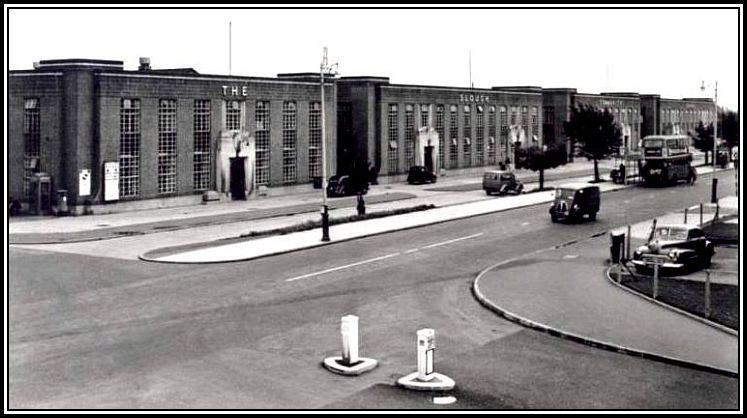 Slough Community Centre
Slough Community Centre
The School was just a stone’s throw from Slough Community Centre on Farnham Road in Slough. Every school day for several years, I remember waiting in one of the open bus shelters outside the building for my bus to come and take me home. During my time at The School, I am sorry to say that I never once entered The Centre. This is unfortunate, as I have since learned that there was a large swimming pool there for public usage and that it also housed a number of Clubs. However, and more importantly, what I have also learned is that Slough Community Centre holds a special place in history since it was the first of its kind in the world.
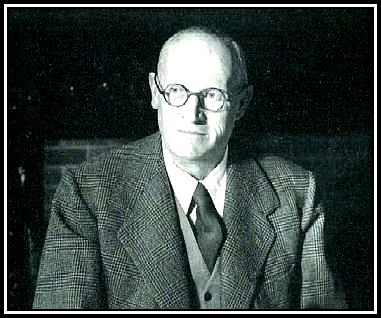 Sir Noel Mobbs
Sir Noel Mobbs
Sir Noel Mobbs (1878-1959) was one of the founders of Slough Trading Estate and proposed a plan to provide a leisure centre for the workers at the factories and their families.
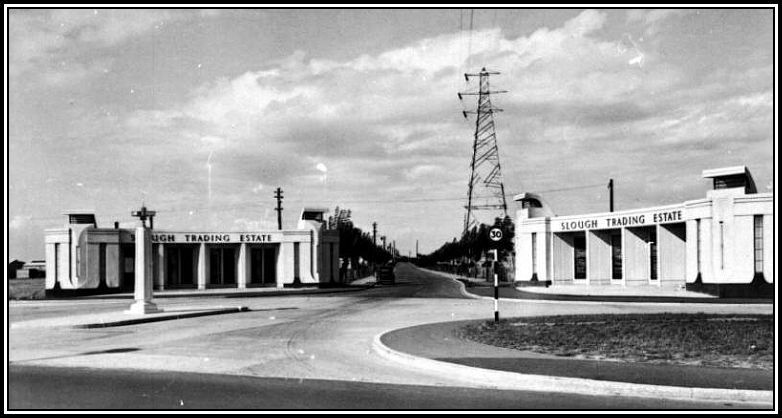 Entrance to Slough Trading Estate on the Bath Road (A4)
Entrance to Slough Trading Estate on the Bath Road (A4)
The cost of building The Centre came from companies present in Slough at that time and including Horlicks (now part of GlaxoSmithKline, GSK), Aspro (once part of The Beecham Group and now part of GlaxoSmithKline, GSK), High Duty Alloys, Mars, Slough Estates Limited (now part of Segro PLC) and Sir Noel.
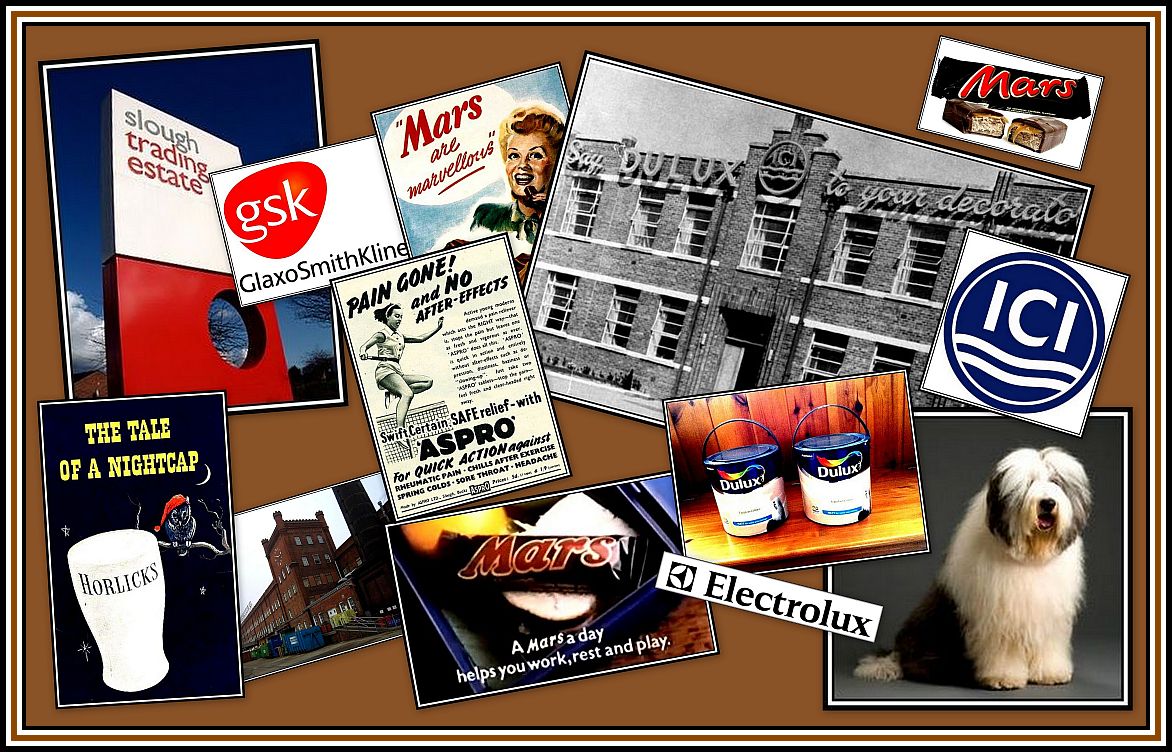
Slough Community Centre was designed by Wallis, Gilbert & Partners who also designed the Hoover Building on Western Avenue (A40) in Perivale, once known as Little Greenford.
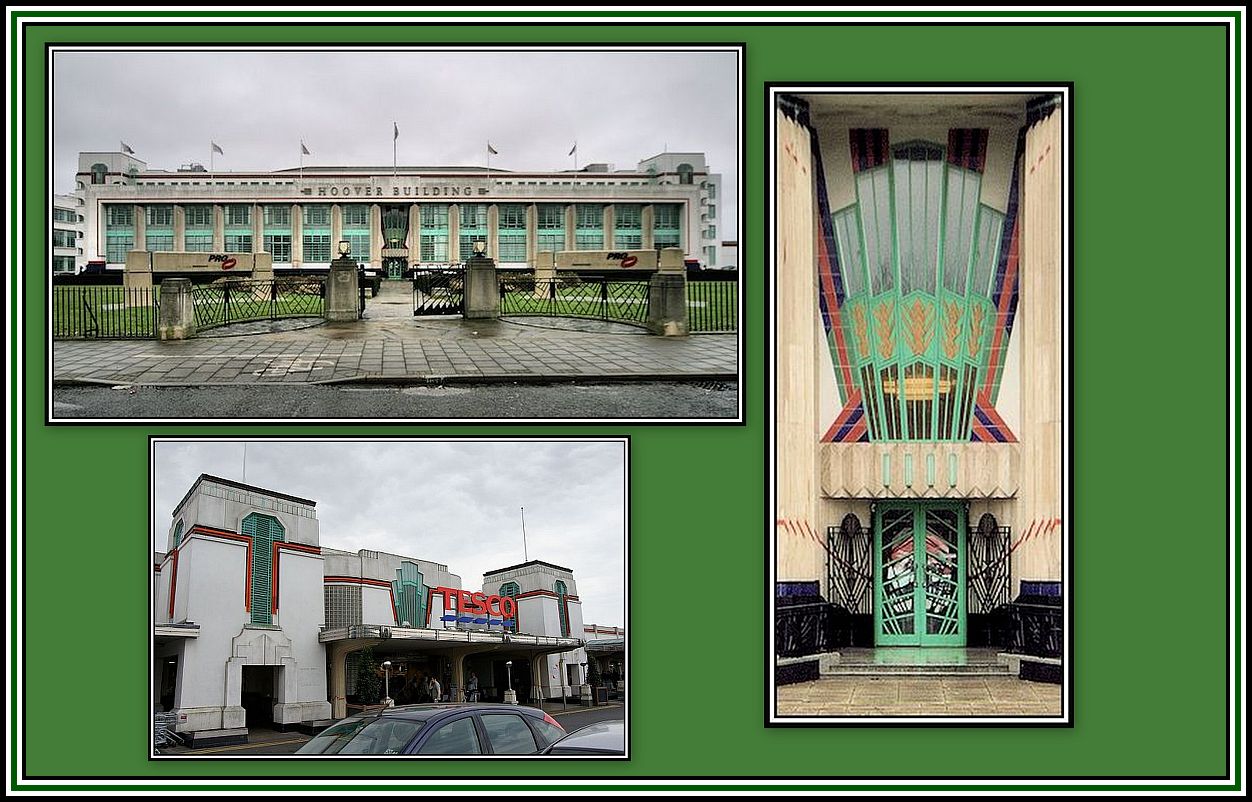 The Hoover Building
The Hoover Building
Bottom Left: Part of the Building as a Tesco Supermarket; photograph taken by Mr. Chris Sampson
Slough Community Centre was opened by Lady Astor (1879-1964) in 1937 and offered a youth club, a swimming pool and a nursery for small children. It also was home to a number of clubs including drama, dancing, badminton and roller skating. It also served as the home for the Slough Philharmonic Society.
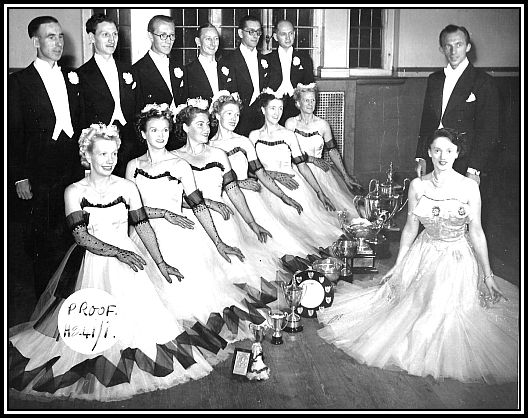 The Slough Formation Dance Team which was very successful during the 1950s & 1960s
The Slough Formation Dance Team which was very successful during the 1950s & 1960s
The Centre was visited by Queen Mary (1867-1953) several months after its opening and also by George VI (1895-1952) and Queen Elizabeth (1900-2002) later in the year. Apparently, the King and Queen played a game of darts against each other while here with the Queen winning.
Slough Community Centre was demolished in 1997 and a new Community Centre was built on the site and opened in 1998. It now seems that there are plans to demolish this new Centre and build another new one somewhere in Slough.
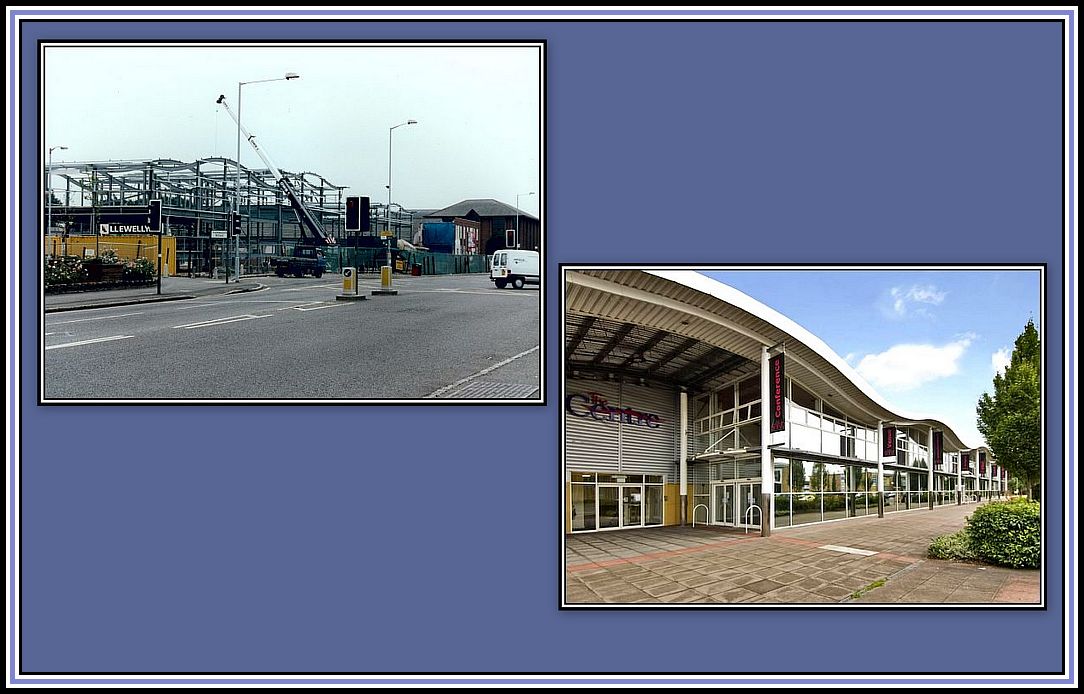 The Centre
The Centre
Left: During Building; Right: Once Completed
-oOo-
Recently I found a postcard of Slough Community Centre from soon after it was built on Ebay. Here is a scanned photograph of the postcard:
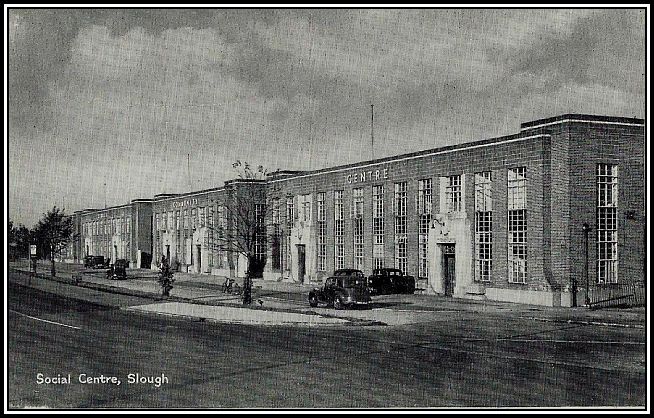
-oOo-
I did go to a Community Centre while I was visiting Oakleigh, a suburb of Melbourne where I attended a Swimming Aerobics class. Nice as it was, I never returned as I felt nauseous in the bath! I suffer with motion sickness very easily and I fear that even the gentle movement of the water together with the mild exercise brought on yet another bout of nausea. This wretched aliment often ruined a number of activities that I had hoped to enjoy!
-oOo-
The Community Centre that I am perhaps most familiar with was one in West Orange, New Jersey. This was a Jewish Centre, which today is now known as JCC Metro West. but had a different name when I used to visit it. Although I am not Jewish, as I was friends with one of the members, I was welcomed there. I always enjoyed my visits to the JCC, as it was called, and took part in many of its activities. There was coffee and food, which was always tasty together with nice folks. Also there were films, presentations and lectures with discussions, which I especially enjoyed. Sadly, once my friend, who was the mother of an ex-student of mine, passed away, I have never returned. I am sorry about this, as I met some very interesting people at the Centre and still miss talking to them.
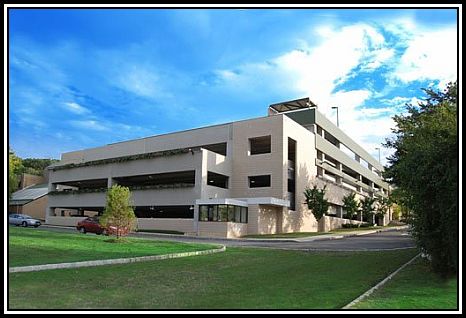 JCC Metro West, West Orange, New Jersey
JCC Metro West, West Orange, New Jersey
-oOo-
When my parents retired, they decided to go to the small Community Centre close to where they lived in Langley. They went to the Retiree-Group several times, but it proved to be especially cliquish and my mother eventually left in disgust.
It seemed that wherever mother chose to sit, she was greeted by other members telling her that she had taken a long-standing member’s seat and was asked to move! Out of politeness, my mother moved, but after this happened each time she visited the Centre, she decided that there was NO seat for her in the place and concluded that she would better off staying at home.
The Erstwhile Slough Public Library was once used as a Day Centre for retirees during the 1970s. Whenever my parents went shopping in Slough, they would stop off at this Centre in the hope of enjoying a cup-of-tea and some conversation. Sadly, once more my poor mother found herself constantly choosing a seat belonging to someone else and asked to vacate! Naturally, this did not prove a particularly welcoming environment for my poor mother and quite soon she gave up stopping-off. It seems my father was content to go there on his own following my mother’s refusal to return and stand rather than sit since all he wanted from the Centre was his cups-of-tea!
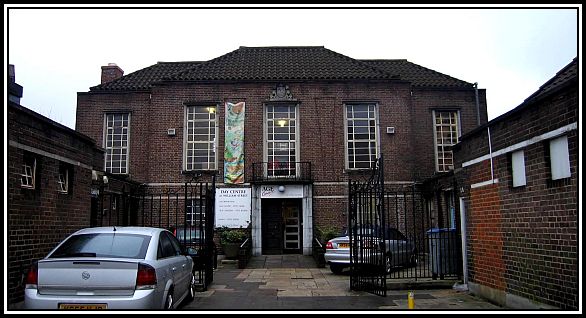 The Old Slough Public Library as a Day Centre
The Old Slough Public Library as a Day Centre
Of course I found my poor mother’s encounters to be highly amusing, not because I found the behaviour of the oldies to be acceptable, but because my mother was very amusing when she recounted her visits.
-oOo-
Now that I am retired, I am sure that should I dare to enter such a Day or Community Centre and try to join an Old People’s Group, I would no doubt find No seat for me either. Rather than put myself through such an indignity and also fearful that I would most certainly lose my temper with the oldies, I have decided not to put myself into such a position.
-oOo-
OXFORD HOUSE …….
FINALLY MOVING FROM A SETTLEMENT HOUSE
TO A COMMUNITY CENTRE ……. OH!
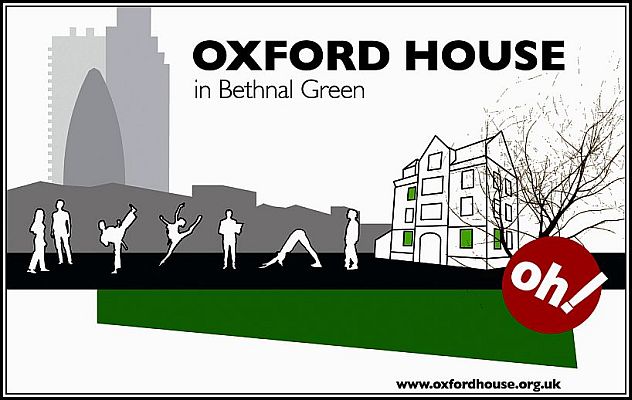
Following the end of the Second World War, Oxford House found itself subjected to a number of outside forces that led to sweeping changes to how The House functioned and how it was perceived by the local populace.
With the breakdown of a number of social barriers, the authorities of Oxford House began to see the organisation as being more of a Community Centre than as a Settlement House. During the post-Second World War years, those in charge consisted of more and more of those who had not attended Oxford or Cambridge Universities and who were not ordained ministers. This situation led to less closer links with the Universities and with the Church of England.
-oOo-
The East End of London had suffered much damage during the Second World War and was in great need of rebuilding with a particular emphasis on new housing.
Bethnal Green, as a result of its close proximity to The Docks, suffered much from bombing. When I was a child, I remember enormous areas of bomb-sites, now being used as playgrounds by the local children, in place of where old houses once stood.
Between March 1953 and November 1956, we lived in a small flat on Paradise Row, which looks onto Paradise Gardens and is on the other side of Cambridge Heath Road and Museum Gardens and St. John’s Church. Apparently the London County Council decided that this house was no longer suitable for people to live in and we were whisked away to a relatively new house in Langley, just on the outskirts of Slough. Although our new home was only about eighteen miles from Central London, it felt as if we had moved to the wilds and I remember feeling isolated and lost!
(Although the old house in Paradise Row was considered unsuitable to housing in 1956, I note that the house if still there with a family or families occupying it.)
We were not the only ones to be rehoused for during the 1950s and 1960s, much of Bethnal Green was rebuilt, as part of the plans for Slum Clearances, with many housing estates being erected. This led to the formation of a number of Community Associations where Oxford House was to become closely involved.
-oOo-
To read more of Oxford House during the 1960s, I recommend that the article written my Ms Maja Bevk entitled: Oxford House in a Changing World
-oOo-
During this period, it became common for those working at The House to no longer be University graduates coming to live there and learn by working in the community. In addition, money coming into The House had been greatly reduced compared to earlier years causing The House to struggle to make ends meet. Unfortunately, the financial situation proved to be so bad that The House was forced to close for three-month in 1972.
-oOo-
Oxford House managed to continue along during the 1970s and 1980s and managed to get its back on an even keel. This was achieved through the diligence and hard work led by a series of Heads with Peter F. Scott C.B.E. as chairman. Mr. Scott held this position from 1980 until 1990 when he retired. During his tenure, Princess Anne, The Princess Royal, became The House’s patron and was present for the centenary celebrations.
-oOo-
Oxford House or Oh!, as it is now referred to, continues to maintain its position as the centre of the Community and still provides services and projects arising from the needs of the changing local community.
Bethnal Green has always been a home for new immigrants to the U.K. As of 2011, the largest ethnic group living in the area consists people of Bangladeshi descent, which makes-up 38% of the population. White British makes-up 30% with other groups, including Somalis, Black Africans and Black Caribbeans, making up the remainder. With the change in the demographics of the area, new customs including festivals are now seen and celebrated each year.
-oOo-
Although the charitable objects of Oxford House and Oh! were, and are, essentially the same, and still mention religion, the influence of expressed Christian teachings and ideals began to be expressed less from the 1920s, and very much so by the 1980s.
Sadly, The Chapel had fallen into a poor state and in great need of repair with the outbreak of the Second World War. Seemingly The Chapel had never been filled during services, but continued to be held despite its poor state. Repairs were made following the launch of a special fund and fully restored and completed in 1997. Despite this, services ceased to be offered in The Chapel when it was deconsecrated.
-oOo-
Oh! holds cultural events and its gallery often offers an exhibition representing an aspect of the multi-cultural society that now makes-up London and the world. Oh! also continues to provide a centre for the arts and a place where societies may meet.
Oh! is still a place where a community member may find Community Health Projects, Pensioners’ Clubs, Youth Work and Art Workshops, as well as meeting place for new immigrants needing help, for example, during the 1990s, Somali groups escaping the ravages of the Civil War were able to come together.
As a result of these current activities, it may be seen that the Board of Trustees of Oxford House is continuing to work along the lines set down in the original mission and vision of its founders well over one hundred years ago ……. and long may it continue to do so!
-oOo-
The following information was sent to me by Mr. John Ryan of OH! (Oxford House):
Today, Oxford House concentrates on three main areas of work to meet its purpose:
- As a community space by managing a variety of office (30 charities & social businesses have offices) and venue/hire space for the local community, charities and social businesses;
- Offering a volunteering programme that develops employability skills, learning opportunities and builds community;
- As a place for heritage and the creative arts by running an arts centre and heritage and arts activity programme using our theatre, dance studio and art gallery.
——oooOOOooo——
ACKNOWLEDGEMENTS
I would like to thank the author(s) of The Oxford House in Bethnal Green (1884-1948), which provided much of the material detailed here. I would also like to thank Mr. John Ryan and Ms Maja Bevk of Oxford House (OH!) for their help in the preparation of this series.
——oooOOOooo——
Readers can TWEET their LIKES & DISLIKES to me at
or
make comments on theWebsite’s FACEBOOK PAGE
or
consider leaving a Comment below.
——oooOOOooo——
Click here to RETURN to OXFORD HOUSE & THE WAR YEARS
——oooOOOooo——
Click here to RETURN to OXFORD HOUSE & ENTERTAINMENT
——oooOOOooo——
Click here to RETURN to
THE NEW OXFORD HOUSE IN BETHNAL GREEN
——oooOOOooo——
Click here to RETURN to THE FIRST OXFORD HOUSE
——oooOOOooo——
Click here to RETURN to TOYNBEE HALL
——oooOOOooo——
Click here to RETURN to THE SETTLEMENT HOUSE Home Page
——oooOOOooo——
Click here to go to the TABLE OF CONTENTS
——oooOOOooo——

